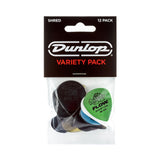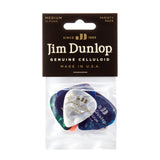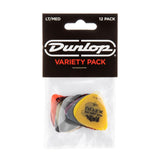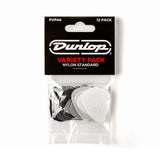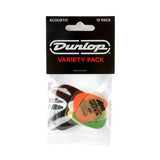In the sixth and final part of our Guitar Setup Guide we’re rounding off the series with one of the easiest ways to improve your guitar tone. There are plenty of guitarists who’ve never even considered the height of their pickups and the massive effect it can have on the guitar, but as with all the steps in our guide, this one will improve the way your guitar sounds, and thus the way you play it.
If you're just joining us and haven't looked at the rest of your guitar yet, we highly recommend starting from Part 1 of the Guitar Setup Guide and taking the steps in order. This will enable you to get your guitar playing its absolute best.
Guitar Setup EssentialsHere are the tools any self respecting guitarist should have in their arsenal. From commonly found toolbox favourites to guitar specific cleaning products, having these in your home or studio space will ensure that your instrument is ready to rock no matter what!
- Guitar Tuner
- Allen Keys (Hex Wrenches)
- Ruler
- Nut Files
- Strings
- String Cutters
- Fretboard Oil
- Fret Polish
- Cleaning Cloths
- Screwdriver
- Body Polish
- Workbench Mat
- Neck Rest
Before we commence with the how and why, it’s important to understand exactly how your pickups work, which in turn will further your knowledge on whether yours are set too low or too high. Your pickups translate string vibrations into electrical signals via the magnets (more commonly known as pole pieces) that are wrapped in countless turns of copper wire. The vibration of your string disrupts the magnetic field of the pole piece, generating current which is then converted into sound by your guitar amp.
Why Adjust Pickup Height?Over time guitar pickups can move due to the amount of vibrations they are subject to. Your pickup screws can be loosened or tightened over time to the point that they are too low or too high. A pickup at the wrong height can not only affect your guitar tone but can get in the way of your picking hand and in extreme cases have a negative impact on your tuning stability.
Marking your ProgressIf you’re not sure you need to change the pickup height, then it’s a good idea to mark their height before you proceed. You can do this by adding a bit of tape to the side of the pickup and marking it with a pen or a pencil, or alternatively measure the distance from the highest pole piece to the string so you can return it to its original height if you need to.
Setting your Pickup HeightThere are many articles that talk about setting your pickups to a 3/32” (2.38mm) to start with, but here at Northwest Guitars we don’t really believe in ‘standard’ measurements. This is because at the end of the day the most important thing is how your pickups sound to YOU. Your most important tool here is not the gauge but your ear, so that’s the one you should pay the most attention to. One person's pickup height is another's nightmare.
With this particular adjustment you need to make sure you’re in a quiet place with only yourself and the sound of your guitar, so you can focus on the effect your changes are having. Headphones work great here too if your amp has an output for that, as they really allow you to hear the detail of the sound without the colouring effect of the room you're in.
Increasing Pickup HeightWhether it’s just lowered over time or you're not satisfied with the output, having your pickups too low can drastically affect your tone, primarily through weaker output. By moving your pickups closer to the guitar string, your output will increase and you will get more treble-y tones. However having them too close can lead to increased feedback, ‘warble’ from notes, and intonation issues. This is because the closer the pole piece is to the string, the more effect the magnetic field has upon it.

To increase your pickup height simply turn the pickup screw clockwise. As with all the adjustments listed in the Guitar Setup Guide you need to go slow here, half or full turns will suffice. Check your tone in between each change to see what your ear can discern, whether it’s ‘better’ or not is a really subjective thing here, so trust your instincts. You do not want your pickups so high they’re touching the strings, so if you are moving yours higher, be sure to fret the last fret of your guitar and make sure your string is not touching or too close to the pickup as this will cause a myriad of problems.
Decreasing Pickup HeightSometimes pickups get moved closer to the strings to increase output but this can have many negative effects on your tone too. Say goodbye to sustain and definition with pickups too close to the strings and in very rare cases, you can even cause the guitar to fret out and buzz if they’re too close. Pickups that are too high can also result in harmonic content overload, which can seriously affect your guitar sound, and not in a good way.

To lower your pickup height you’ll need to turn the pickup screws anti-clockwise, again making changes in small increments and testing each step of the way. Lowering your pickup height can give you mellower tones from hot humbuckers, as well as getting them out of the way of your picking hand. If it’s the latter you may need to find some compromise, as lowering too much will result in a weak sounding guitar tone.
Other Pickup TypesThe majority of Humbuckers and Single Coils on Strat-style guitars are adjusted by two screws at the top and bottom of the pickup. However some guitars have different ways to adjust as listed below:
Telecaster Single CoilsThe Tele Bridge Pickup usually has three screws, two nearest the bridge and one on the neck side. The two closest to the bridge move the pickup from right to left, while the other screw keeps the pickup level with the strings. At the neck pickup you’ll find some have screws at the top and the bottom, mounted to the scratchplate, whilst some are direct mounted to the body, meaning you’ll have to take the pickguard off to make the adjustment.

Jazzmaster Pickups don’t use their screws for adjustment, they are purely for mounting the pickups. Jazzmaster pickups feature a foam strip in the pickup cavity to push them to the correct height. This means you’ll have to add or remove foam to increase or decrease the height of your pickups.
P90 PickupsLike the Jazzmaster and Jaguar, the mounting screws are purely for mounting and don’t affect the pickup height, and are placed in between the pole pieces, lending the P90s their unique look. There will be foam or springs located under the pickup cover that control the height of the pickup, so you’ll need to adjust this to move your pickups higher or lower.
Dog Ear P90 PickupsDog Ear P90s do not have a way to raise or lower the whole pickup, however they do have individually adjustable pole pieces. This allows you to stagger the heights as you’d see on many Strat pickups, or raise them all to the same height. This can get quite tricky so proceed with caution, it’d be wise to make a note of the height before you start playing with them.
Top TipsWhen testing your sound after making the adjustment, play like you would normally. Don’t play a sweet bluesy lick if you're in a technical death metal band! Be sure to play for a few minutes, testing the amp settings and pedals you would normally use to ensure that you’re making the correct changes when adjusting.
Start with raising or lowering your pickup screws together, but if you find you’re hearing more or less of the bass or treble side, don’t be afraid to lower or raise one or the other to get the perfect blend for your needs. Sometimes you need the bass strings closer or vice versa to get the sound you desire.
This leads nicely onto our next point, and probably most important which is to trust your ear! You know what sound you want to achieve and you know your playing style better than anyone. If you think it’s right, it’s probably right!
If you’re still not achieving the sound you desire, then it may be time to think about swapping your pickups. A set of vintage wound single coils will never deliver the tones you need to play Djent and no amount of pickup height adjustment will change that. If you find you’re not able to achieve the sound you’d like, then it may be time to consider a new set.
You can find a whole host of pickups here.
In ConclusionThis is one of the easier adjustments you’ll make to your guitar and you can’t do any damage to your guitar doing it, provided you’ve documented your starting point. It may take you some time to get it right, but as with everything in our Guitar Setup Guide, it’s slow work worth doing right. Each guitar is unique in it’s own way, as is it’s player, so no two pickups will ever be set to the same height. As you learn to setup your own guitar and do it more often, you will find that these adjustments become much easier, so don’t fret if you’re struggling with it.
If you are really struggling then we’d always recommend taking your guitar to a guitar tech or luthier. Book an appointment with ourselves, or someone closer to home, if you find yourself really struggling.
More in This SeriesPart 1 - Truss Rod Adjustment
Part 2 - Adjusting the Action
Part 3 - Know Your (Guitar) Nuts
Part 4 - Keeping Things Clean
Part 5 - Intonation Adjustment
Part 6 - Pickup Height















